LED Lamp Wattage and how to choose the right brightness

When you want to choose the right LED lamp wattage, you need to focus on how much brightness you want in your space. In the past, people looked at watts to judge how bright a bulb would be. Now, LED lighting has changed this. You get the same brightness from a Led Light using far less wattage. For example, a traditional bulb may have used 60 watts, but a modern LED bulb can give you the same light using only about 10 watts. This shift means you should look at lumens, which measure brightness, not just the wattage.
💡 Tip: Always check the lighting facts on the Product label when you choose the right led bulb for your Home or About Us page. Led light bulbs make lighting more efficient and help save energy.
Key Takeaways
Choose LED bulbs by checking lumens, not watts, to get the right brightness for your space.
LED bulbs use much less energy than old bulbs but give the same or more light, saving you money and power.
Pick the color temperature that fits your room’s mood: warm light for relaxing and cool light for work areas.
Always read the packaging for brightness, energy use, and compatibility to make smart lighting choices.
High-quality LED bulbs last longer and work better, helping you save on replacements and enjoy reliable light.
LED Lamp Wattage vs. Lumens
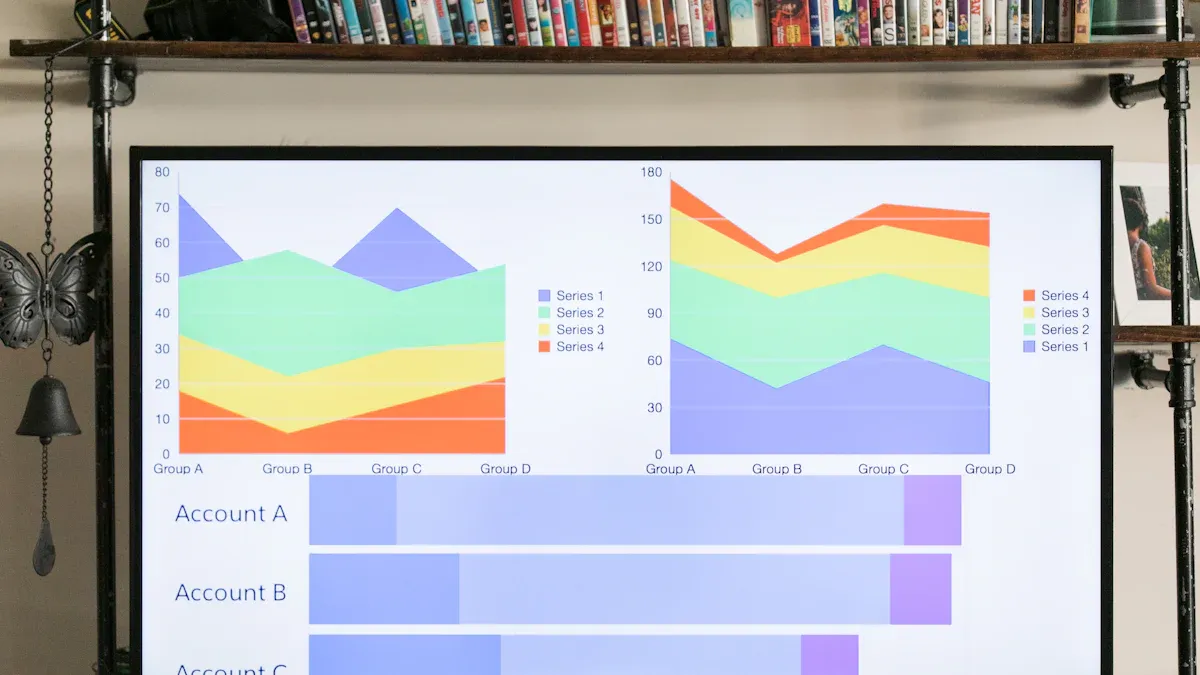
What Is LED Lamp Wattage
When you look at a light bulb, you often see a number followed by "W." This number stands for watts. Watts show how much electrical power a bulb uses. In the past, people used watts to guess how bright a bulb would be. With LED lamp wattage, things work differently. LED bulbs use much less power to make the same or even more light than old incandescent bulbs.
Here is a table that compares the power use and light output of incandescent and LED bulbs:
Bulb Type | Typical Wattage | Typical Lumens |
|---|---|---|
Incandescent | 60 W | 800 lm |
LED | 10 W | 2000 lm |
You can see that LED lamp wattage is much lower for the same or higher brightness. Incandescent bulbs waste a lot of energy as heat. LED technology uses semiconductors to create light, so almost all the energy goes into making light, not heat. This makes LED lamp wattage a measure of energy use, not a measure of brightness.
Understanding Lumens
Lumens tell you how much visible light a bulb gives off. This is the real measure of brightness. When you shop for bulbs, you should look for the number of lumens, not just the watts. The higher the lumens, the brighter the light output.
Here is a table that shows how many lumens you get from different types of bulbs and their wattages:
Approximate Lumen Output | Incandescent Wattage Equivalent | LED Wattage Equivalent |
|---|---|---|
100 lumens | 7 W | 2 W |
375 lumens | 25 W | 4 W |
450 lumens | 30 W | 5 W |
800 lumens | 60 W | 9 W |
1100 lumens | 75 W | 12 W |
1600 lumens | 100 W | 17 W |
2600 lumens | 150 W | 27 W |
3000 lumens | 200 W | 32 W |
LED bulbs can produce 75 to 110 lumens per watt. This means you get much more light output for every watt you use. LEDs are about seven times more efficient than incandescent bulbs. You can see this in the chart below:
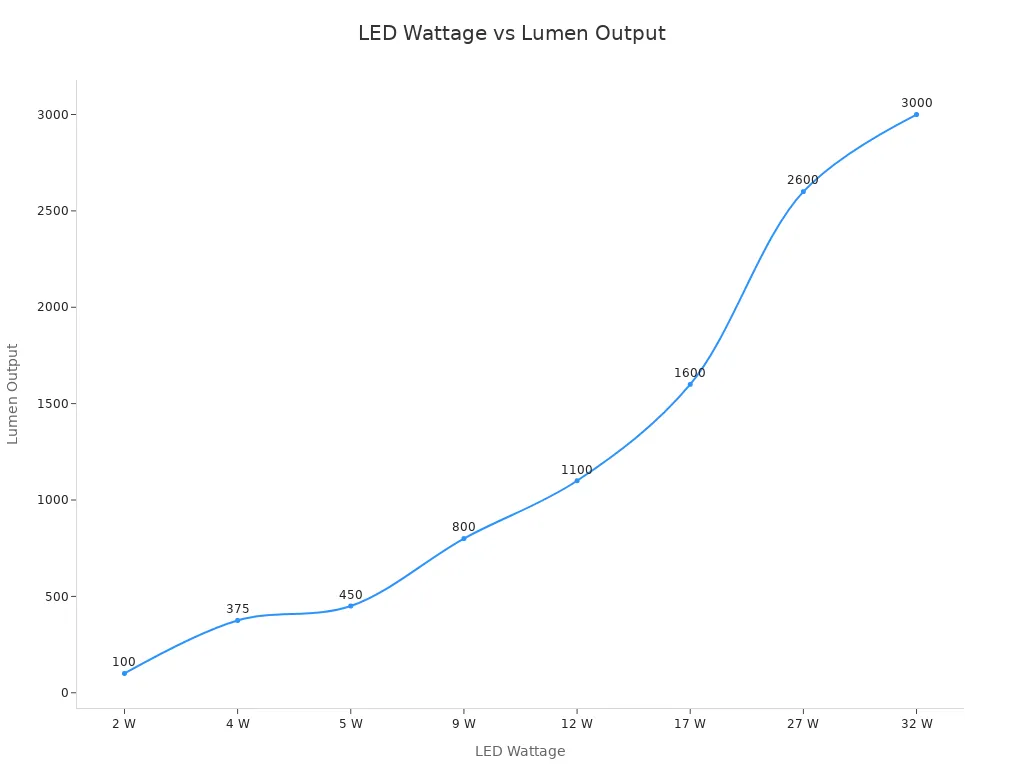
Why Lumens Matter More
You should always use lumens to choose the right bulb for your needs. Watts only tell you how much energy the bulb uses. They do not tell you how bright the bulb will be. This is very important with LED technology because LED lamp wattage is so much lower than old bulbs.
Lighting experts say that lumens are the best way to measure brightness. Lumens give you a clear idea of how much light output you will get, no matter what kind of bulb you buy. This helps you pick the right bulb for your room, your desk, or any space where you need a certain measure of brightness.
Here is another table that shows how many watts you need for different bulbs to get the same amount of lumens:
Lumens (Brightness) | Incandescent Watts | CFL Watts | LED Watts |
|---|---|---|---|
400 – 500 | 40W | 8 – 12W | 6 – 7W |
650 – 850 | 60W | 13 – 18W | 7 – 10W |
1000 – 1400 | 75W | 18 – 22W | 12 – 13W |
1450 – 1700+ | 100W | 23 – 30W | 14 – 20W |
2700+ | 150W | 30 – 55W | 25 – 28W |
LED bulbs give you more lumens per watt than any other type. This means you save energy and still get the light output you want. You can see this in the bar chart below:
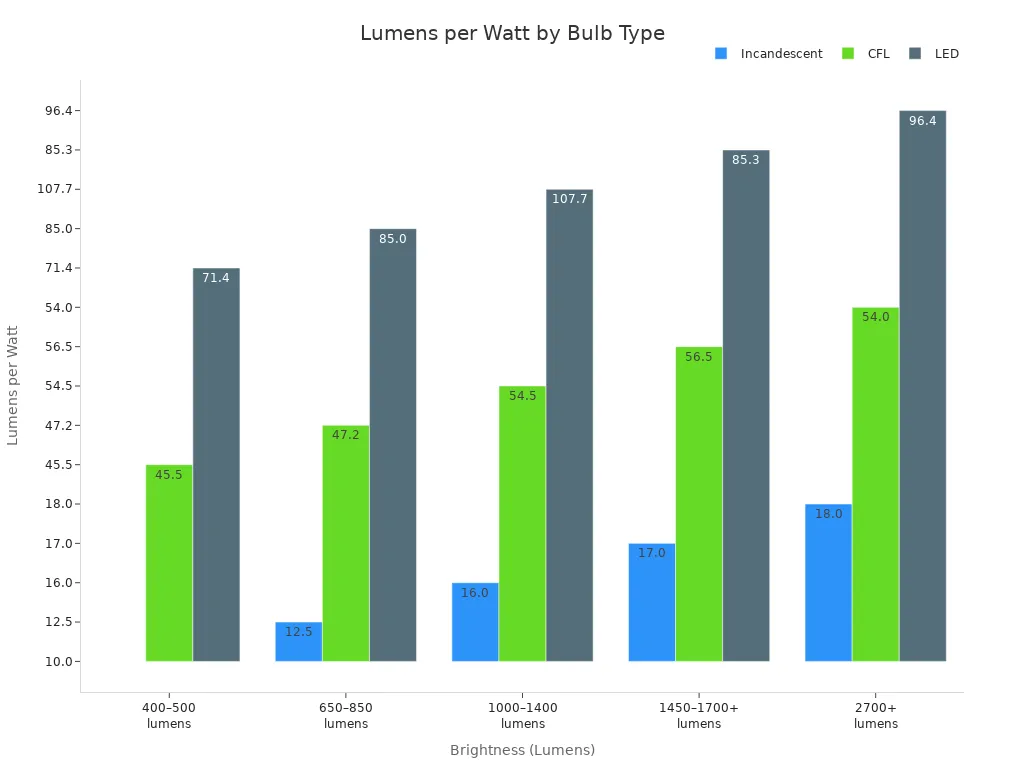
💡 Tip: Always check the lumens on the package. Do not rely on watts alone. This will help you get the right measure of brightness for your space and save energy at the same time.
Choosing an LED Light Bulb
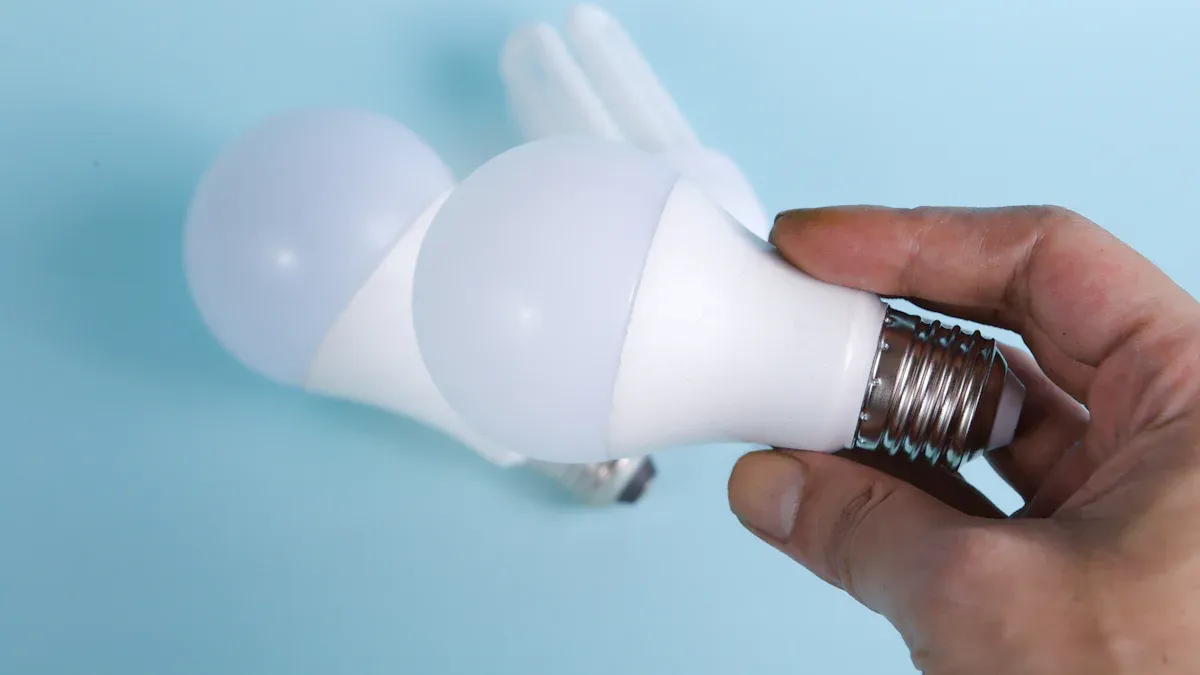
Identify Needed Lumens
When you want to light up a room, you should start by figuring out how much brightness you need. Lumens measure the amount of light a bulb gives off. Each room in your home needs a different amount of lumens. For example, kitchens need more light than bedrooms. You can use the following table as a buying guide to help you choose the right lumen numbers for each room:
Room Type | Recommended Lux Range | Recommended Lumens (approx.) | Notes on Lighting Type and CRI |
|---|---|---|---|
Kitchen general | 150 lux | ~375 lumens | General lighting; CRI ~35 |
Kitchen working areas | 400 lux | ~750 lumens | Task lighting on worktops; CRI ~70-98 |
Bedroom general | 50-150 lux | ~375 lumens | Indirect lighting preferred; CRI ≥ 90 |
Living rooms | 100-150 lux | N/A | Flexible lighting with dimmers; layered light |
Bathrooms | 150-300 lux | ~500 lumens | General lighting; CRI ~35 |
Dining rooms | 150-450 lux | ~500 lumens | General lighting; CRI ~45 |
You can also see how the recommended lumens compare for different rooms in this chart:
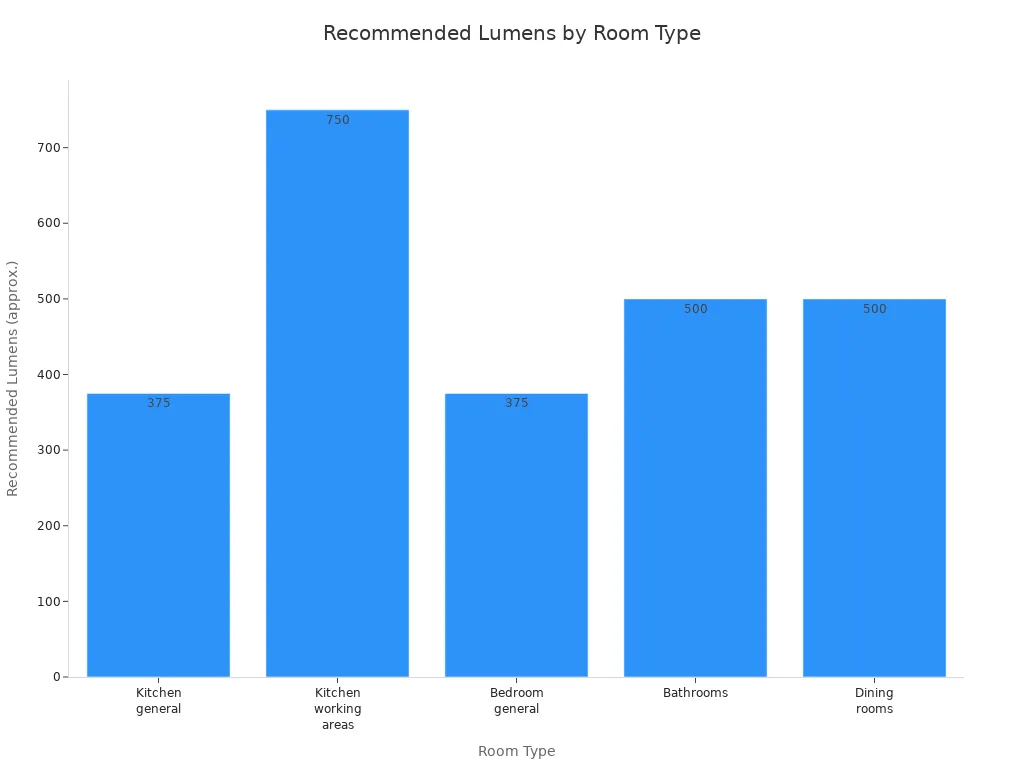
If you want to light a kitchen worktop, you should look for a bulb with about 750 lumens. For a bedroom, you might only need around 375 lumens. This step helps you avoid bulbs that are too dim or too bright for your space.
📝 Tip: Think about what you do in each room. Reading, cooking, and relaxing all need different lighting levels.
Use a Lumens-to-Wattage Chart
After you know how many lumens you need, you can use a lumens to watts conversion chart. This chart helps you find the right LED light bulbs to match the brightness of old incandescent bulbs. LEDs use much less energy to make the same amount of light. For example, if you want to replace a 60-watt incandescent bulb, you only need an LED bulb that uses about 9 watts to get the same brightness.
Here is a helpful lumens to watts conversion chart:
Lumens Needed | Incandescent Watts | Halogen Watts | LED Watts (approx.) |
|---|---|---|---|
450 | 40 | 29 | 6 |
800 | 60 | 43 | 9 |
1100 | 75 | 53 | 12 |
1600 | 100 | 72 | 17 |
2600 | 150 | 100 | 27 |
You can see that LED bulbs give you more lumens per watt than other types. This means you save energy and money. The chart below shows how much less power LEDs use for the same brightness:
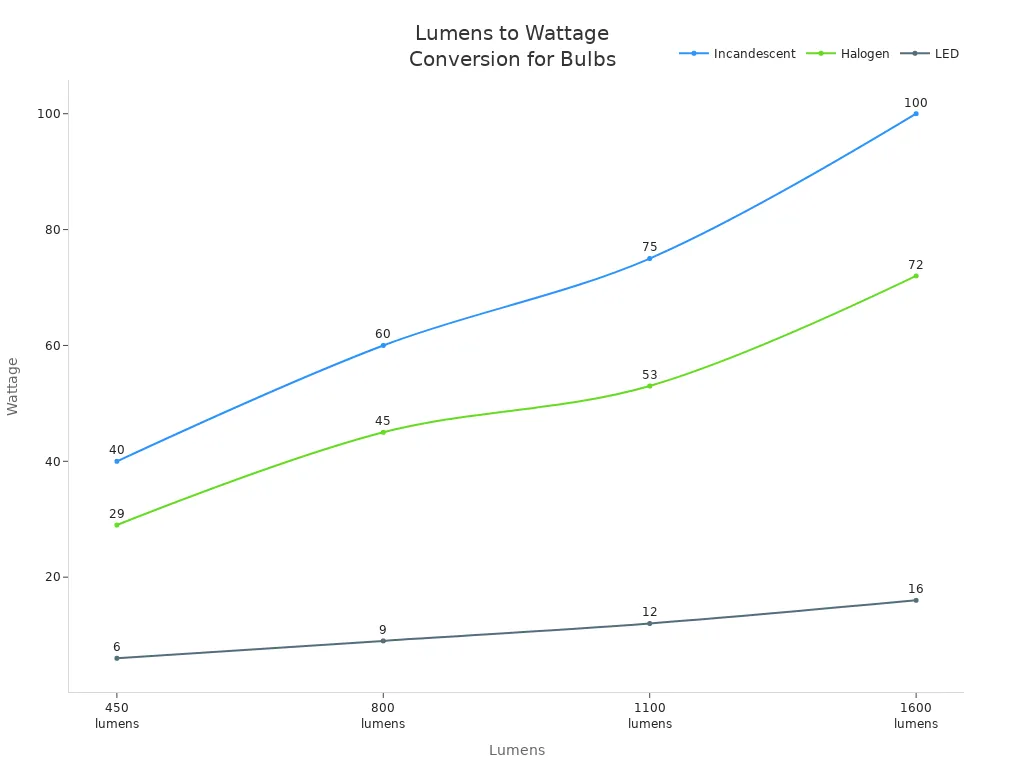
If you want to replace a 75-watt incandescent bulb, look for an LED light bulb with about 1100 lumens and 12 watts. This method works for any room and helps you pick the right bulb every time.
💡 Note: Lumens to watts conversion charts are a great buying guide, but always check the actual lumens on the package. Different brands may have small differences.
Check the Packaging
When you shop for LED light bulbs, always check the packaging for important information. The Lighting Facts label gives you the details you need to make a smart choice. You will find the following on most packages:
Brightness (lumens): Shows how much light the bulb gives.
Energy use (watts): Tells you how much electricity the bulb uses.
Incandescent equivalent wattage: Helps you compare to old bulbs.
Color temperature (Kelvin): Shows if the light is warm or cool.
Bulb life: Tells you how long the bulb should last.
Energy Star rating: Shows if the bulb meets energy-saving standards.
Color Rendering Index (CRI): Tells you how well the bulb shows colors.
You can use the Lighting Facts label to compare different bulbs. Look for the lumens first, then check the watts to see how much energy you will save. The label also helps you match the equivalent wattage of your old bulbs with new LED options.
🔎 Tip: Always read the Lighting Facts label before you buy. This step makes choosing an LED light bulb much easier and helps you get the right lighting for your home.
Other Factors for LED Light Bulbs
Color Temperature
Color temperature, measured in kelvins (K), shapes how a room feels. Warm light (1850 K to 3000 K) creates a cozy, relaxing atmosphere. You often see this in bedrooms and living rooms. Cool light (around 6000 K) feels crisp and alert, which works well in garages or workspaces. Lighting science shows that the right mix of color temperature and brightness can help you feel relaxed or focused. For example, warm light with bright output or cool light with dim output helps your mind stay calm and clear. If you use cool, bright light or warm, dim light, you may feel tired or tense.
Here is a quick guide to common color temperatures and their best uses:
Color Temperature Range | Description | Recommended Uses |
|---|---|---|
2700K - 3000K | Warm white, soft and cozy | Bedrooms, living rooms, dining areas |
3500K - 4000K | Neutral white, balanced and focused | Offices, retail spaces, kitchens |
5000K and above | Cool white or daylight, bright and crisp | Garages, workshops, outdoor areas |
📝 Tip: Choose warm light for relaxing spaces and cool light for work areas.
CRI (Color Rendering Index)
The Color Rendering Index (CRI) tells you how well a bulb shows true colors. CRI uses a scale from 0 to 100. A high CRI (above 90) means colors look vivid and natural, like they do in sunlight. This matters in places where you need to see colors clearly, such as kitchens, bathrooms, and living rooms. Low CRI bulbs can make colors look dull or strange, which can make a room feel less inviting. Most experts recommend a CRI of 90 or higher for home lighting, especially in spaces where color matters.
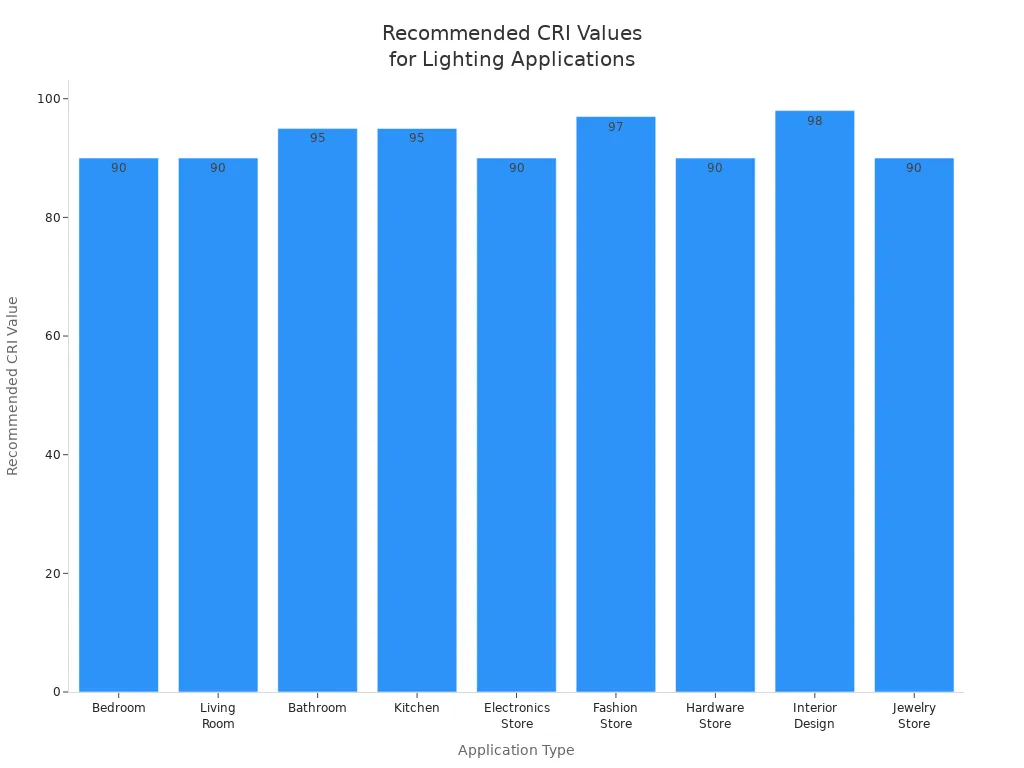
Bulb Shape & Size
Bulb shape and size affect how light spreads in your room. A-shape bulbs work well for general lighting. Globe bulbs also give even light for large spaces. Decorative shapes like B and C bulbs fit chandeliers and add style. PAR bulbs focus light for tasks or highlighting objects. The size of the bulb’s base matters too. Large bases can handle more power and spread light widely. Small bases focus light in one spot. Always check that the bulb fits your fixture. The right shape and size help you get the best light for your needs.
Fixture Compatibility
You need to match your LED bulb to your fixture for safety and performance. Here are some key points:
Use bulbs labeled “For Enclosed Fixtures” in closed spaces like ceiling fans or recessed lights. Standard LEDs can overheat in these spots.
Only use dimmable LED bulbs with dimmer switches. Non-dimmable bulbs may flicker or not work well.
Sometimes, you may need help from an electrician to set up dimmable LEDs.
Always check the bulb’s packaging for compatibility notes.
💡 Note: The right bulb keeps your lighting safe, efficient, and long-lasting.
Practical Tips to Choose the Right LED Bulb
For Reading and Task Lighting
When you choose lighting for reading or detailed tasks, focus on brightness and comfort. Experts recommend at least 500 lumens for reading. If you do more intricate work, you may need up to 1100 lumens. You should also pay attention to color temperature. Warm white (2700K), cool white (4500K), and daylight (6500K) all work well, depending on your preference and the time of day.
Here are some tips for reading and task lighting:
Pick LED bulbs with at least 500 lumens for reading.
Use 800 to 1100 lumens for crafts or homework.
Choose adjustable lamps with dimming and glare reduction to protect your eyes.
Place your lamp at shoulder height and to the side to reduce shadows.
Select LED lamps with flexible arms for easy positioning.
📝 Note: LED light bulbs use less energy and give off less heat, making them safer and more efficient for close-up work.
For Ambiance and Living Spaces
To create a cozy atmosphere in living rooms or bedrooms, use warm light between 2400K and 3000K. This range makes spaces feel welcoming and comfortable. Dimmable LED bulbs let you adjust the brightness to fit your mood or activity. You can layer your lighting by combining floor lamps, table lamps, and wall lights for a balanced effect.
Use warm color temperatures for relaxing spaces.
Add dimmable bulbs to control the mood.
Mix different types of lighting for depth and comfort.
Common LED Bulb Replacements
When you replace old bulbs, match the lumens, not just the wattage. The table below shows common replacements for incandescent bulbs:
Incandescent Bulb Wattage | Approximate Lumens Range | Typical LED Wattage Replacement |
|---|---|---|
40W | 400 – 500 lumens | 6 – 7W |
60W | 650 – 850 lumens | 7 – 10W |
75W | 1000 – 1400 lumens | 12 – 13W |
100W | 1450 – 1700+ lumens | 14 – 20W |
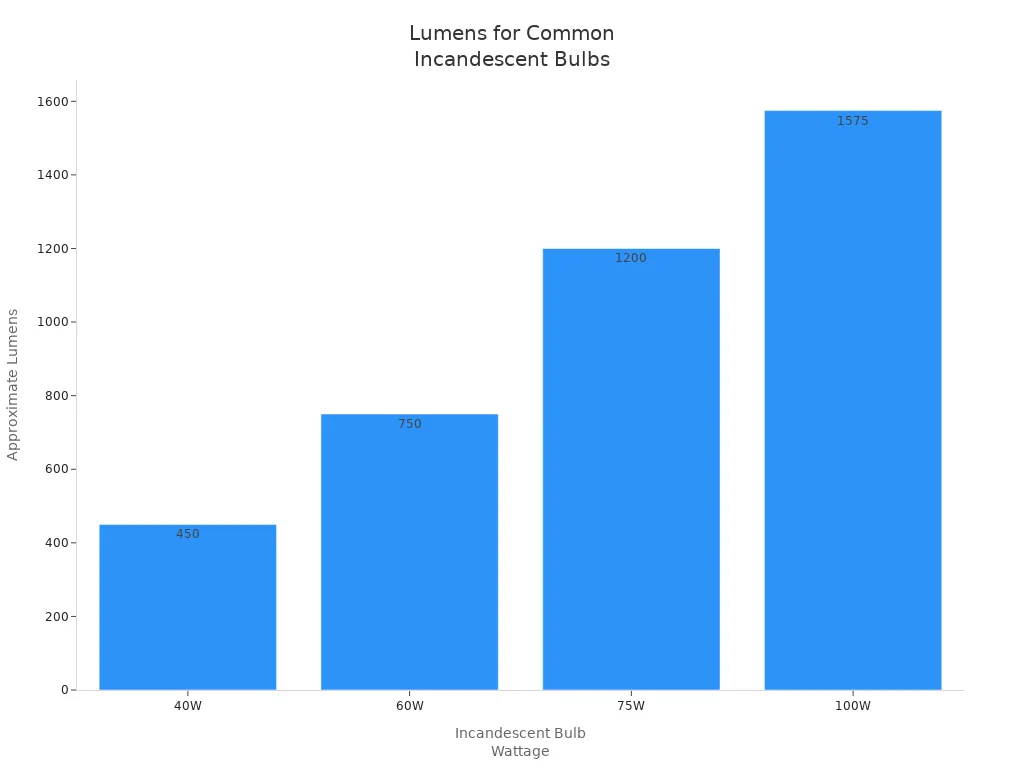
💡 Tip: Always check the lumens on the package to make sure your new LED light bulbs give you the right amount of lighting for your space.
LED Light Bulbs vs. Other Types
Energy Efficiency
When you compare different types of bulbs, you will see that LED bulbs stand out for their energy efficiency. LED bulbs use 70 to 90 percent less energy than traditional incandescent bulbs. CFL bulbs are better than incandescent bulbs, but they still cannot match the efficiency of LEDs. LEDs also do not give off heat, so your home stays cooler and you save on air conditioning costs. You can use LED bulbs in many places, including outdoors, and most are dimmable. If you want energy-efficient lighting, LEDs are the best choice.
LED bulbs use much less wattage for the same brightness.
CFL bulbs use less energy than incandescent bulbs but more than LEDs.
LEDs last up to 3.5 times longer than other bulbs.
CFLs contain mercury, so you must dispose of them carefully, but LEDs do not have this problem.
💡 Tip: Switching to LED bulbs helps you save energy and makes your home safer and cooler.
Cost Savings
Switching to LED bulbs can save you a lot of money over time. If you replace 20 incandescent bulbs in your home with LEDs, you could save about $500 in five years. Each LED bulb costs more at first, but you pay less for electricity each year. For example, an LED bulb uses about 8-10 watts, while an incandescent bulb uses 60 watts for the same amount of light. This means you save about 75% on your energy bill. LEDs also last much longer, so you do not need to buy new bulbs as often. Even if you only change 10 bulbs, you can save over $50 each year just on energy costs.
Aspect | LED Bulbs | Incandescent/CFL Bulbs |
|---|---|---|
Initial Unit Cost | Higher | Lower |
Energy Consumption | Much lower | Higher |
Lifespan (hours) | 50,000 | 15,000 |
Payback Period (years) | N/A |
📝 Note: You usually get your money back from the higher cost of LEDs in about four years, and after that, you keep saving.
Lifespan
LED bulbs last much longer than incandescent and CFL bulbs. Most LED bulbs can work for 25,000 to 50,000 hours. Incandescent bulbs usually last about 1,000 hours, and CFLs last around 8,000 to 15,000 hours. This means you will change LED bulbs far less often. However, some LED bulbs can fail sooner because they have more parts inside. Problems with electronic parts, like capacitors, can cause early failure. Good quality LEDs with better parts last longer and work more reliably. Always choose high-quality LED bulbs for the best results in your lighting.
LED bulbs can last up to 3.5 times longer than other bulbs.
Incandescent bulbs have fewer parts and may fail less often, but they do not last as long.
Quality LEDs with good thermal management have lower failure rates.
💡 Tip: For the longest-lasting and most reliable lighting, pick high-quality LED bulbs and check reviews before you buy.
Choosing the right LED bulb becomes simple when you know what to look for. Follow these steps:
Select the color temperature that fits your room’s mood.
Use dimmable bulbs if you want adjustable lighting.
Check the beam angle for the right light spread.
Match the bulb to your lighting needs—ambient, task, or accent.
LED bulbs give you more light with less energy. Use these tips to make your next lighting choice easy and smart.
FAQ
How do I know which LED bulb replaces my old incandescent bulb?
Check the lumens on the LED bulb package. For example, if your old bulb was 60 watts, look for an LED bulb with about 800 lumens. Always match the brightness, not just the wattage.
Why do LED bulbs use less wattage for the same brightness?
LED bulbs use advanced technology to turn electricity into light more efficiently. You get more light with less energy. This saves you money and helps the environment.
Can I use LED bulbs in any fixture?
Most LED bulbs fit standard fixtures. For enclosed fixtures or dimmers, choose bulbs labeled as “enclosed rated” or “dimmable.” Always check the packaging for compatibility.
What does “color temperature” mean on LED bulbs?
Color temperature tells you if the light looks warm or cool. Warm light (2700K–3000K) feels cozy. Cool light (4000K–5000K) feels bright and crisp. Pick the color that matches your room’s mood.
Do LED bulbs really last longer than other bulbs?
Yes! LED bulbs can last up to 25,000 hours or more. You will change bulbs less often and save money over time.
See Also
Key Features And Benefits Of GE LED Light Bulbs
How To Choose Ideal LED Bulbs For Various Fixtures
Comparing UFO Linear And Round LED High Bay Lamps
Understanding LED Replacement Lights Benefits Types Installation

